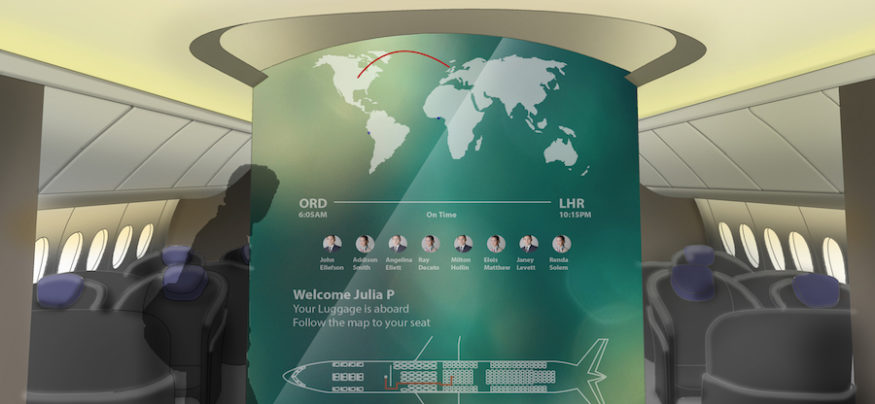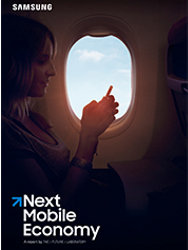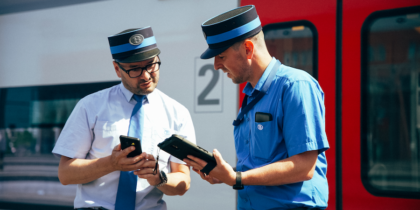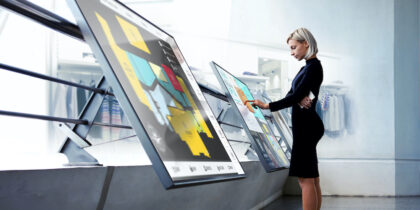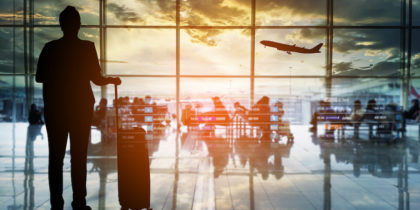From the invention of the wheel to the remarkable achievement of human flight, there have been a handful of major milestones in human mobility. In each case, invention is later followed by innovation that turns relatively limited use cases into highly efficient and widely available forms of travel.
If you live in the developed world, you probably think flight is in the category of mass availability. But the reality is that fewer than one in five people worldwide have experienced flight.
And for the people who have, it’s been a mixed bag. Airlines do their best to make flight comfortable and seamless, but too often the journey is fraught with delays, cancellations and discomfort.
Airline technology is really only now entering the era of innovation that will make flight a widely available and consistently positive experience. At Boeing, we see five key areas fundamentally changing the economics and ecosystem of aerospace for safer, more attainable, efficient and sustainable journeys.
Solutions for Developing Countries
Flight is not widely available in developing countries. It’s simply been too expensive in many locales for governments and airlines to build out the type of infrastructure they’ve realized in the developed world. And while the global middle class is expected to grow from 700 million to over 1 billion by 2030, jet travel will remain too costly for many of the world’s 8.5 billion people.
Even with these limitations, airlines have an opportunity to redefine the flight experience in a way that’s more accessible. In the developed world, we’ve become accustomed to a certain standard of jet travel and expect to have a reasonably comfortable, catered experience with an in-flight meal, entertainment and other comforts.
For developing countries that have had limited access to flight, it may be possible to build an experience that can be provided more broadly and affordably by an air vehicle that flies slower or can take off and land vertically, while limiting these extras and rethinking the interior of the cabin accordingly.
Low-Stress Travel
On the other end of the spectrum, passengers in developed countries can afford to pay a relative premium for a comfortable and enjoyable journey. But until now, airlines have only focused on the journey from airport to airport.
Taking a two-hour flight means spending an average of six hours on the travel journey — getting to the airport, dropping off bags, going through security, picking up bags and getting to the hotel. Imagine if, instead, passengers could be taken to the airport in an automatically scheduled vehicle, drop their bags instantly, check in using biometrics and get to their gate without ever having to go through a security line.
The air travel industry will build this experience with technology that’s already emerging. While artificial intelligence (AI) and machine learning work to identify and eliminate threats, augmented reality will help passengers find their gate and perhaps dial up the best cup of coffee.
Without these improvements to the experience, passengers will eventually turn to alternatives such as autonomous cars, which may slow their travel but at least enable them to sleep undisturbed.
Bringing flight closer to home
By 2050, the world’s population will grow by one-quarter to nearly 10 billion, and two-thirds of all people will live in urban areas. That means we’ll need to think beyond the airport/airline model to expand flight to include shorter trips and daily commutes.
Self-flying taxis and personal flight vehicles will not only enable faster travel across short distances but serve as an office space for meetings and productivity. Of course, making this idea a reality will require sophisticated air traffic management on a massive scale. But Boeing has already begun working with manufacturers and startups alike to bring it to life.
Connectivity and Big Data
Perhaps nothing will change airline technology as much as connectivity and big data. Connectivity will be taken for granted in 2050, so airline technology will have to advance to meet the expectation that a passenger can start a movie at home and continue watching it in-flight, while communicating with colleagues and family members from the air. Moreover, airlines will also better understand individual passengers’ preferences regarding entertainment, meals and other elements of the experience to make their journey more personalized.
Embrace the Next Mobile Economy
Get this free report on how to realize the potential of mobile in your business. Download Now
Augmented reality (AR) can also help improve the cabin experience by providing contextual information in a fun and engaging way. Imagine an aircraft that is fitted with AR-enabled windows to provide details on landmarks they’re passing. For stargazers, an OLED display on the cabin ceiling might display the nighttime sky and identify constellations.
From an operational perspective, big data and AI will help airlines better predict the weather, schedule flights and communicate those schedules more perfectly to minimize delays and canceled flights. Maintenance will also be managed by AI tuned to predict failures before they happen, cutting back on surprises and improving efficiencies in a big way.
Sustainability
One of the greatest expenses and challenges with air travel has always been the economic and ecological costs of fuel consumption. As an industry, our goal is to cut emissions to half of what they were in 2005 by 2050. There are a few ways we might get there, including increasing the use of biofuel blends, switching to 100% locally produced biofuel when possible, and incorporating hybrid electric technology.
The future of flight has to be more sustainable and focused on creating a better world for people, economies and the environment — or it simply won’t survive.
How to Reach Our Final Destination
Much of the technology we need to build this vision of 2050 flight already exists. Airlines and airports are working with manufacturers and technology innovators to use information and make air travel more accessible, seamless and reliable. Many of these building blocks are in place, and the industry is continually improving performance and opening new opportunities.
This is not only on Boeing’s radar but airlines’ the world over. Eighty-one percent of airlines cite connected technologies as a high or very high priority for their business, with 95 percent planning to make a connected airplane purchase over the next five years, according to internal data.
Our vision for the future of flight in 2050 could come sooner, as airlines modernize using the technology available to them. In the timeline of human flight, we’ve made great strides already, but the best is definitely still to come.
See how airports are using wearable technology to enhance the passenger experience.
